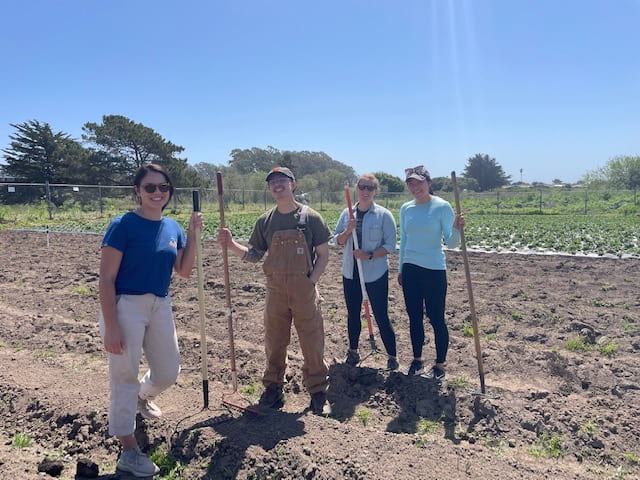By: Dr. Luis Arabit
Every spring semester, the Occupational Therapy (OT) department offers an introductory course (OCTH-224- OT in Community I) with a service-learning experiential component that exposes occupational therapy Masters graduate students to the distinct and emerging role and service OT offers in emerging and non-traditional settings in neighboring communities around San Jose.
This spring semester, despite a rocky start to community placements due to the spreading Omicron variant, students were finally provided placements in a variety of community settings, which included the Homeless Garden Project, AACI Moorpark, Boldly Me, Catholic Charities of Santa Clara County, and AACI Story Road- GLOW Project. These community sites serve individuals, groups and populations that are affected by social determinants of health issues such as homelessness, joblessness, immigrants experiencing trauma, increasing incidence of HIV infection, children experiencing mental health issues, and those experiencing various levels of poverty. The aim of the course is to apply the social model of health to promote participation and engagement in health-promoting occupations and to describe how conditions such as poverty, trauma and disability can create occupational imbalance, restriction, alienation, or deprivation which influences individual and community health and well-being.
 As an example, OT students who were placed in the Homeless Garden Project Center developed a proposal that centered on homeless individuals where they designed a program that emphasized on addressing the mental and physical health of participants, assessing individual abilities, discussing personal goals, values and interests while working on relevant and appropriate vocational skills, that would help place them at work and job sites that would best suit their abilities and interests. This proposed program by the students exposes and increases student learning about the infinite possibilities for occupational therapy to be of service to individuals and groups who are marginalized in society.
As an example, OT students who were placed in the Homeless Garden Project Center developed a proposal that centered on homeless individuals where they designed a program that emphasized on addressing the mental and physical health of participants, assessing individual abilities, discussing personal goals, values and interests while working on relevant and appropriate vocational skills, that would help place them at work and job sites that would best suit their abilities and interests. This proposed program by the students exposes and increases student learning about the infinite possibilities for occupational therapy to be of service to individuals and groups who are marginalized in society.
As part of the requirements for this course, the OT students develop a community profile and action plan based on collaborative and participatory needs assessment strategies. They analyze community resources, and identify any need for additional and potential resources of support for possible program development. In the process, they are guided to identify how occupational therapists can assume various roles of consultants and collaborators in emerging community practice areas to promote health, well-being, community development while meeting the occupational needs of the community. As a culminating final assignment, the students reflect on the role of the occupational therapist as a health-promoting advocate and global citizen.
